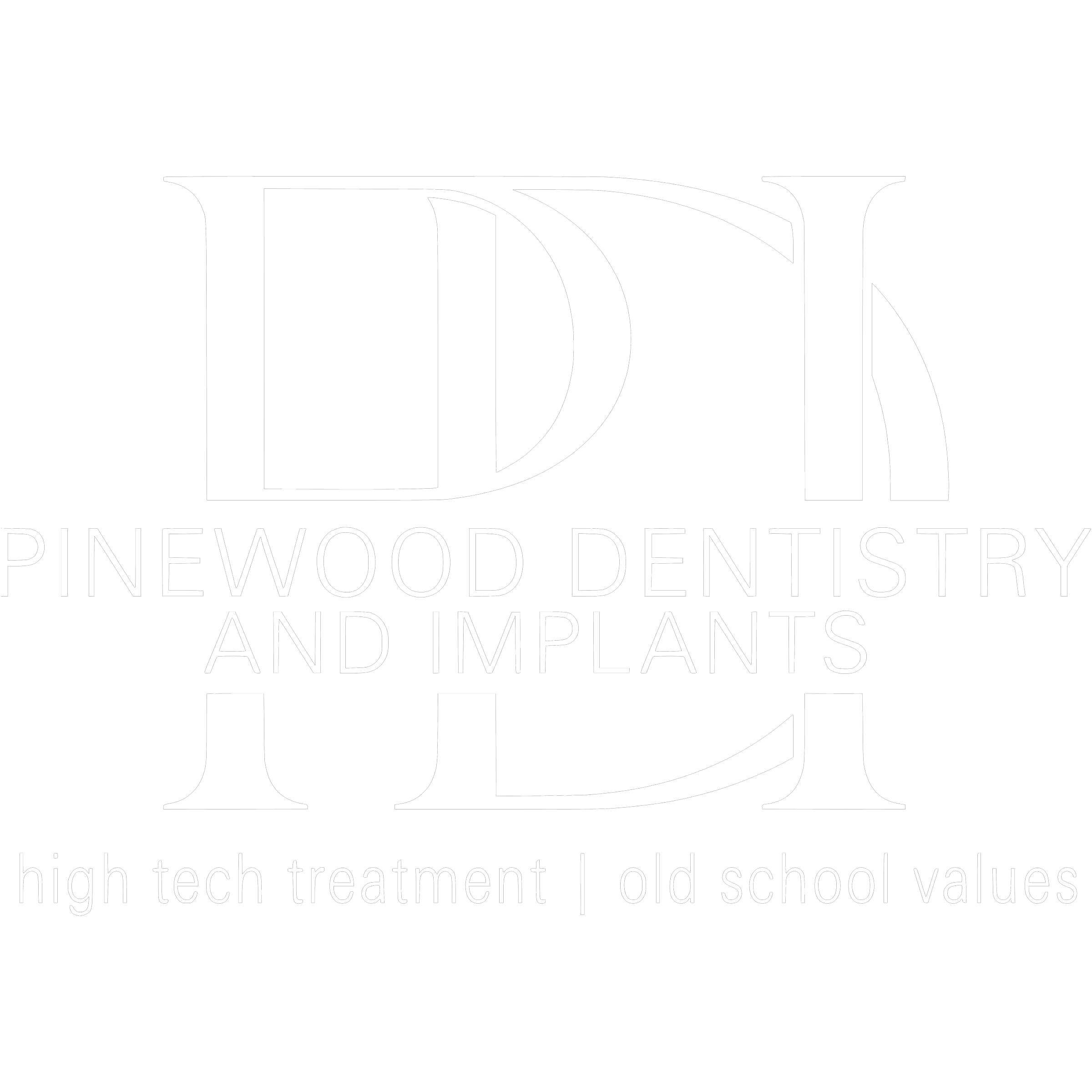Implant Restorative Options
So I now have a fancy bionic root screw in my jaw, and the process easy…. now what?
Hopefully your dentist had a plan for what to attach to your implant prior to having it placed… but lets pretend they didn’t. What are the options and uses for dental implants? We can divide the options into two categories, removable and fixed prosthetics. Usually, we have to wait 3 months to use the implant for the bone to heal. Sometimes, as is the case with most Fixed Hybrids, we can use the implant early, and give patients something to chew and smile with while they are healing.
Fixed Implant Prosthodontics
– Single Tooth Implant Crown: This is the most common use for a dental implant, that screw becomes the ‘root’ for a single tooth. After the implant is stable and healed, a crown is fabricated to attach to it. These crowns can either be screw retained (the crown has a hole in the top, and a single piece is attached to the implant, screwed down, then your dentist will cover the hole up with a composite restoration) or will rest on what we call an abutment. An abutment is essentially a ‘crown holder’ and is usually custom designed to train the gums to look like the tooth it is being used to replace. After the abutment is installed, its screwed into place on the implant, a crown is then cemented on top. Both options work great, and lead to a tooth that should not look ‘fake’ at all but blend in naturally with your smile!
– Implant Bridges: This is another common option, sometimes multiple teeth can be replaced with multiple implants. A common example is to replace 3 or 4 teeth with just two implants. This can be due to bone availability or quality, or simply a way to help save on the surgical expense. Additionally, it can be difficult to maintain soft tissue around two implants that are next to each other… you will have more gums around a natural tooth than an implant, so sometimes if you have minimal gum tissue, an implant bridge can be used to have superior soft tissue esthetic outcomes, especially when dealing with front teeth! This process is the same as single tooth implant crowns, the bridge can either be screw retained or rest on abutments that are made to sit on the implants, and the teeth can blend into your smile and look very natural.
– Hybrid/All-on-4/All-on-X: This is a more complicated restorative option, essentially all of the teeth on an arch are replaced with a handful of implants, usually 4-6. What is so cool about this prosthetic, is that it can break the ‘3 month rule’ and we can use the implant immediately. That only works because they are all rigidly joined together by the prosthetic, which is strong and made of something like printed ceramic, PMMA, or Zirconia. Essentially — this prosthetic can be thought of as a long span bridge that is permanently attached to the implants. Usually these prosthetics have prosthetic gum tissue on them too. Almost every case goes through a temporary first, for about 3 months, then turns around and gets a final prosthetic made. They can be made out of a variety of materials, and can look extremely natural. This is probably the coolest procedures we can do today, ‘teeth in a day’ and completely transform someone’s smile and life.
Gallery: Implant Bridge
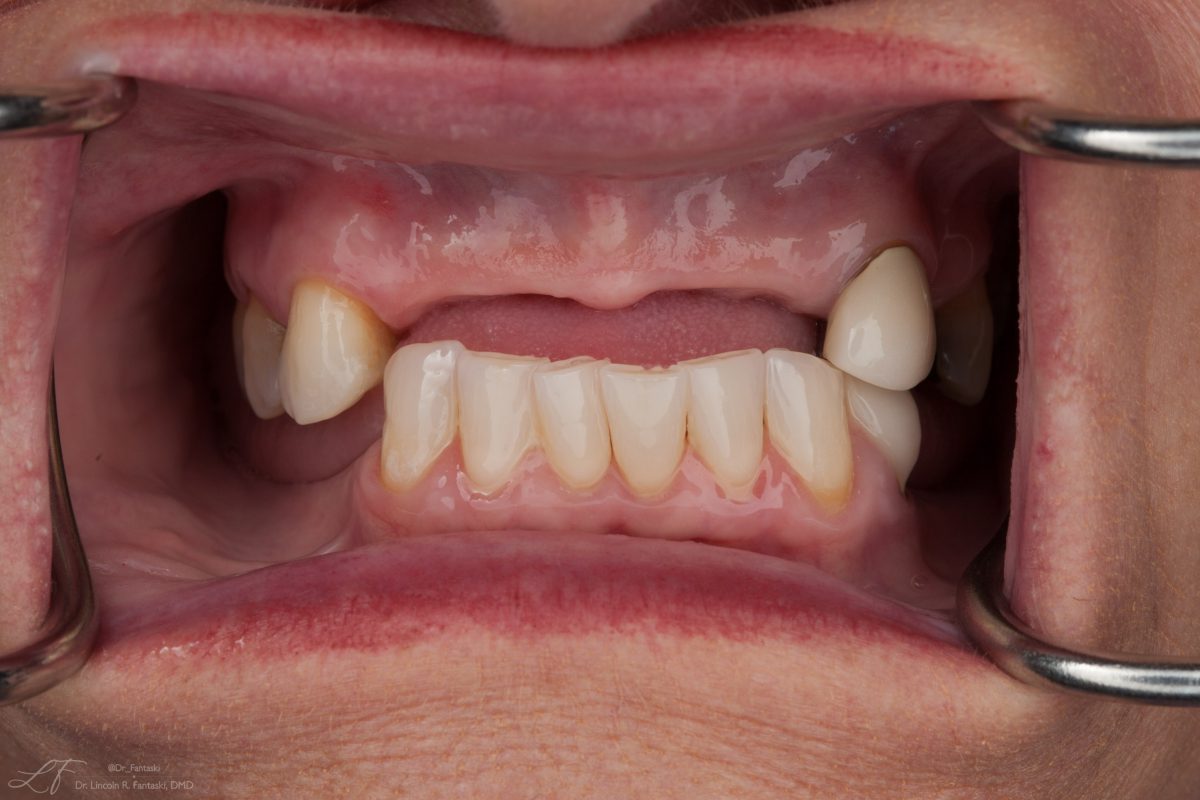
Before 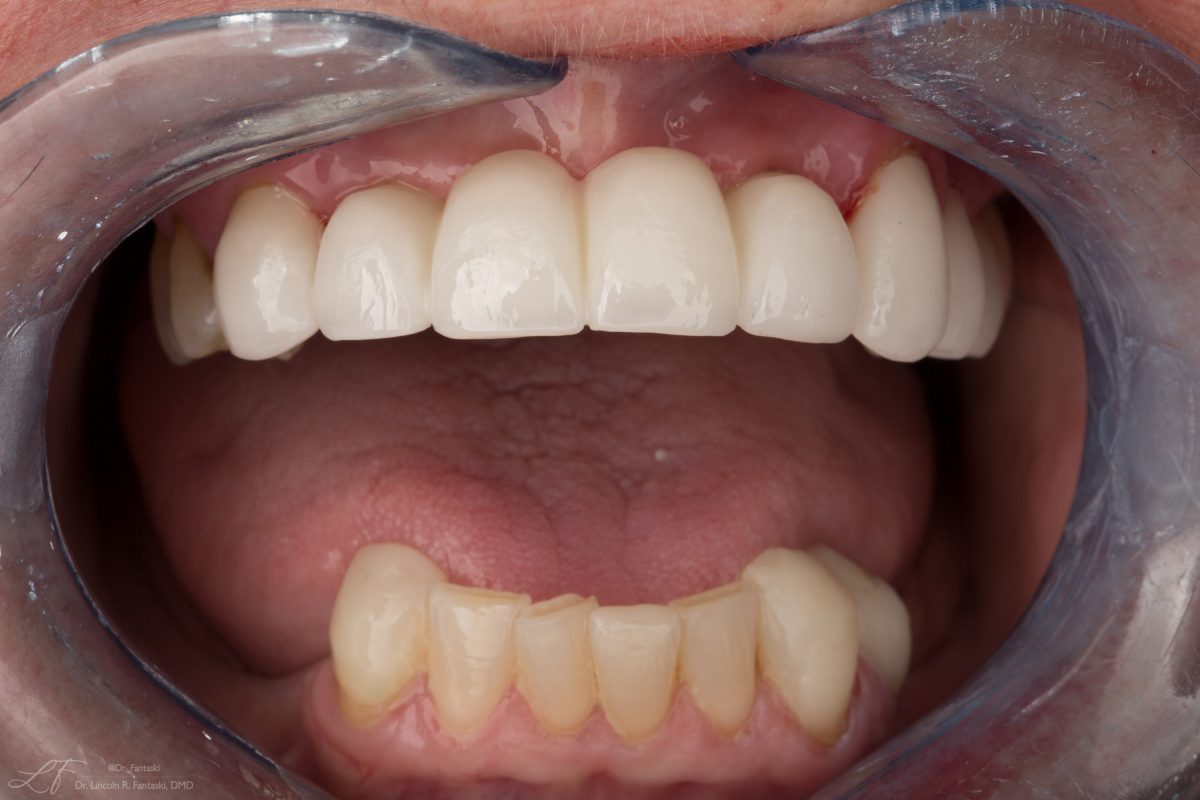
After: Delivery Day 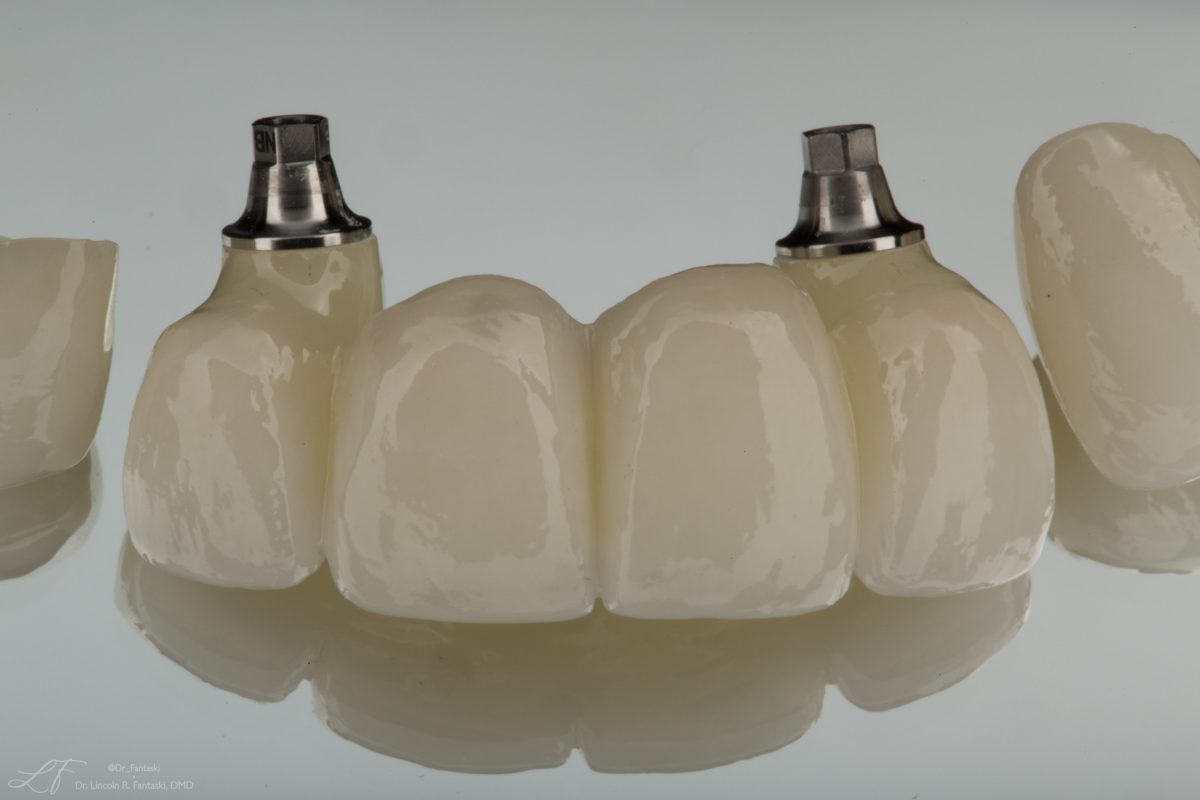
Restorations 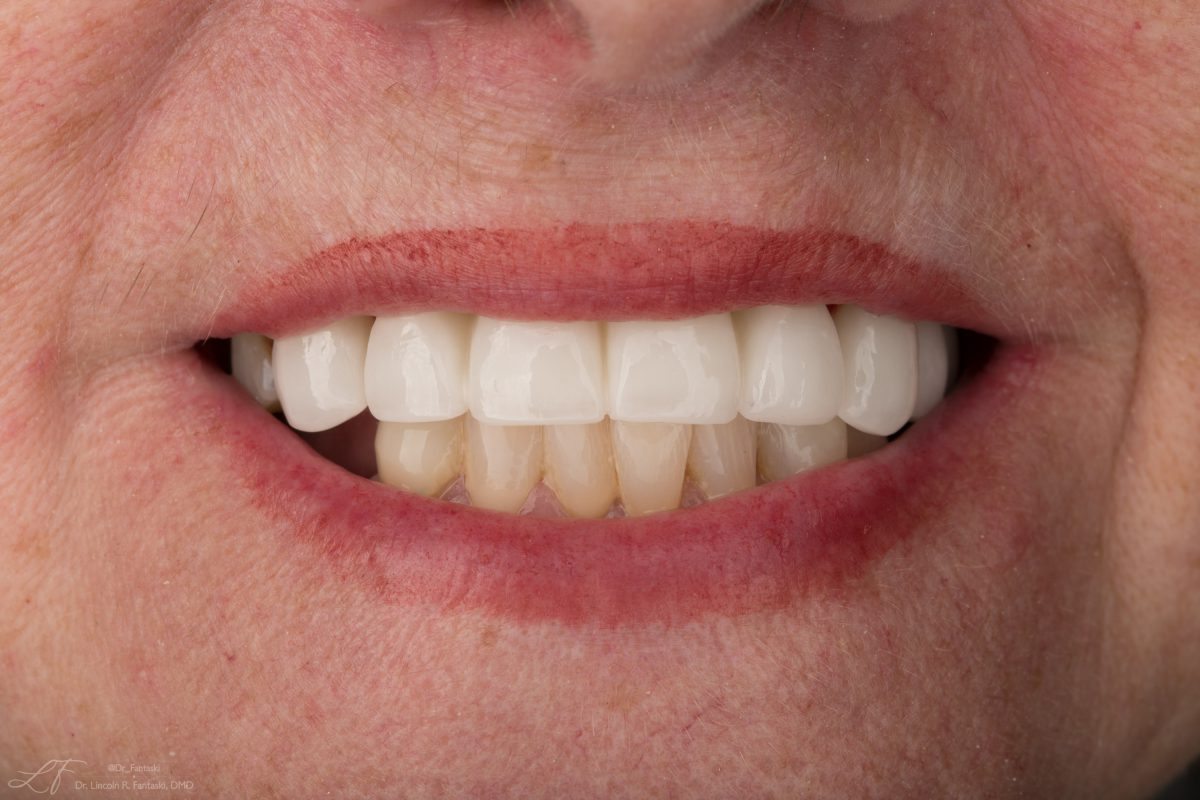
After: Smile after 1 Week
Gallery: Fixed Hybrids
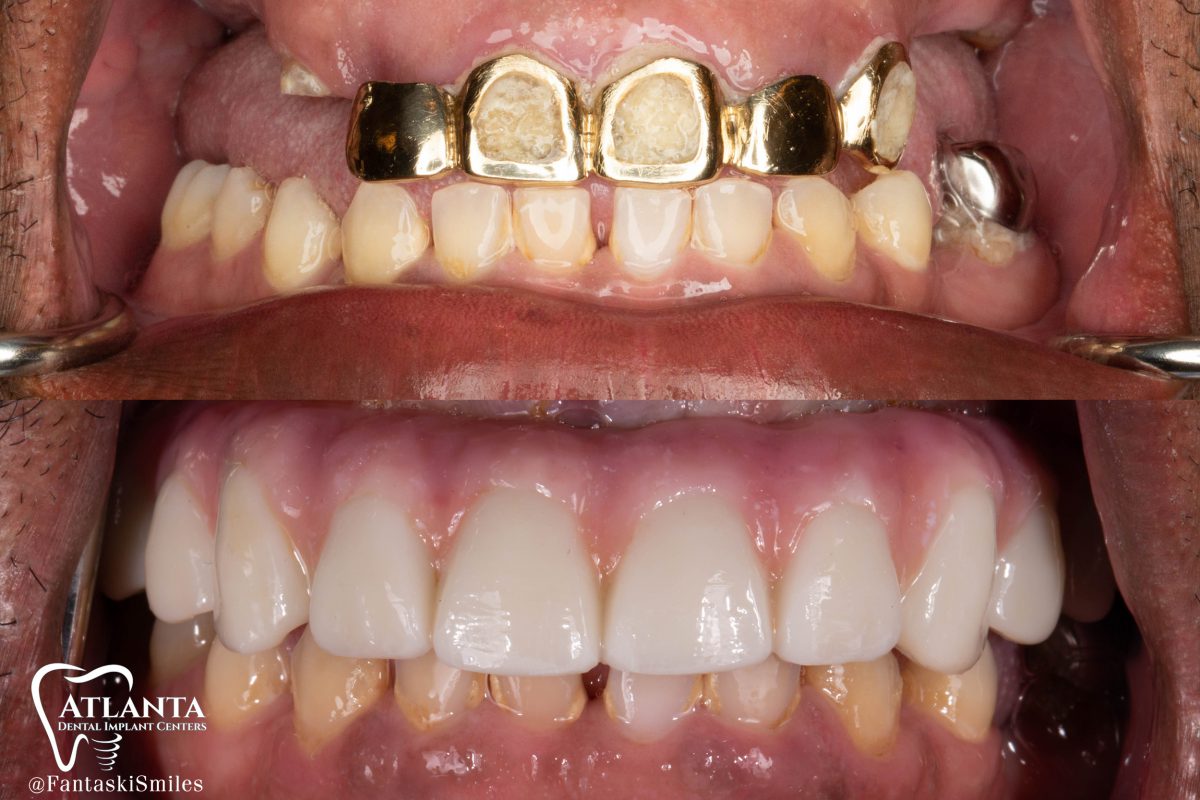
Fixed Upper Hybrid 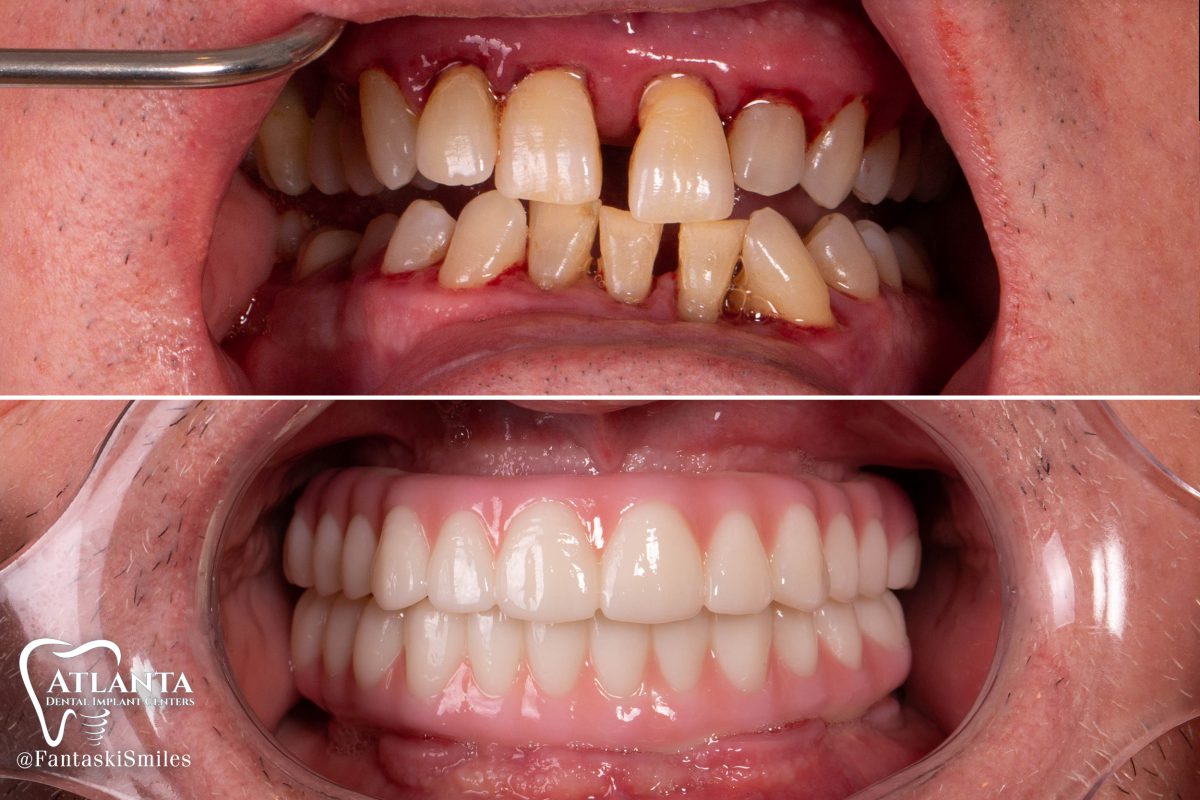
Upper/Lower Hybrids 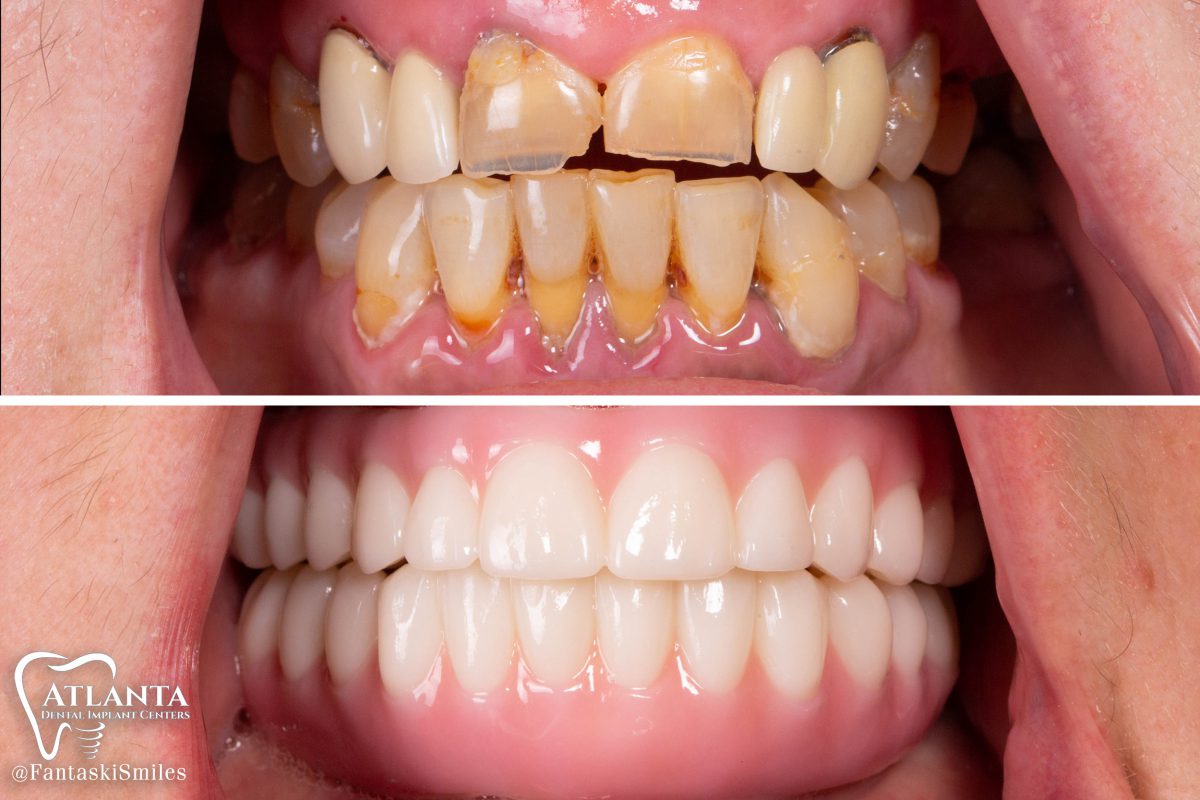
Upper/Lower Full Arch Hybrids 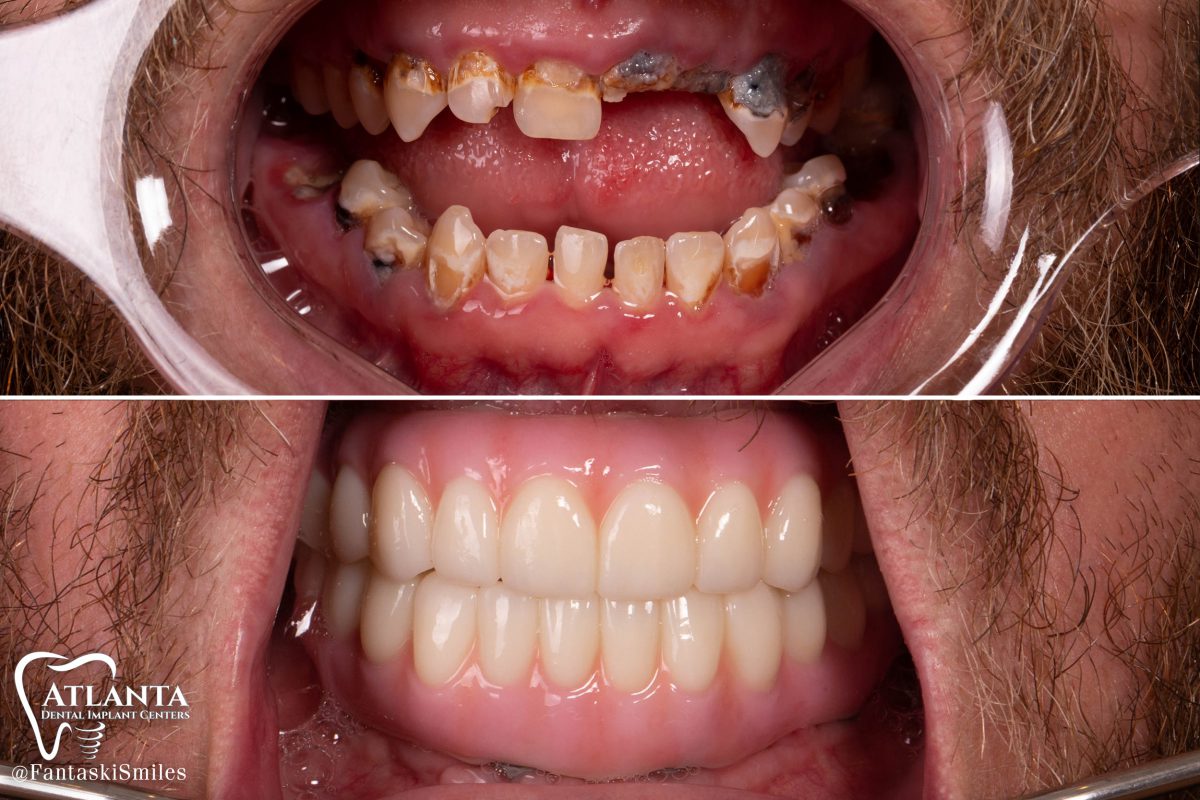
Upper/Lower Hybrids
Gallery: Single Implant Crown


Removable Implant Prosthetics
– Implant “Snap In” Dentures (aka Overdentures, Snap In Smiles, or just ‘implant dentures’): If you either already have a denture, or are interested in getting one made, adding implants can transform how that prosthetic can work for you. Essentially, your denture will ‘snap in’ to your implants which will both hold it in place, and support your biting forces. Typically we need 2-6 implants for this treatment option, spread from the front of your jaw to the back. For lower dentures, usually two implants is life changing and they are placed in the front of the jawbone. For upper dentures, usually 4 implants are used, and the denture is transformed by eliminating the palate. This is a fantastic treatment option; as it is more affordable than a hybrid/all-on-4, but does involve an immediate denture during the healing period that the implants are integrating — and that denture almost never fits well. Thankfully, the final one with the implant components in it does fit fantastically, and is truly life changing!

Upper “Snap In” Denture
– Implant Partials: Do you already have a partial, or are you getting one fabricated? Using an implant to secure the partial can change how it functions! You can ‘lock’ your partial into an implant to secure it to your jaw, typically allowing it to rest on teeth and implants to function to replace the teeth on that arch. Allowing the implant to keep the partial in place makes it more comfortable, and implants securing the partial can also result in less claps being used on the natural teeth. This treatment is typically used to support a partial which does not have teeth farther behind it, a common example is to support a partial that replaces the back teeth on the lower jaw.
